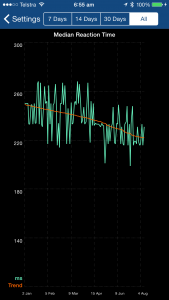I’m going off topic today and sliding into another field, I am going to provide some diatribe on an exceptionally important skill, an attribute that people should improve, an ability whose importance is ever increasing and one that for the most part is severely lacking.. that of Situational Awareness, or SA form here on in.
SA is simply the knowledge and understanding we have of what is going on around us in relation to the circumstances and surroundings (our situation), and the application of this knowledge to the level of focus we have and our perception of this situation or fact (awareness) with the potential for generating an appropriate plan.
A bit long winded but in essence being ‘switched on’ to our surroundings.
For those that have ready Grossman, you will be familiar with the concept of sheep, wolves and sheepdogs.
I am not going to go into this concept here but briefly the majority of todays society and the sheep… those that plod along in daily life, living in blissful ignorance of what is going on around them and the potential threats that exist.
Then we have the wolves, that element of society that have embraced the predator’s mindset to achieve their goals, they don’t play by the rules that we count on to keep us safe, they don’t adhere to the general concepts of ethics and therefore seem more ruthless by our standards… One of the most dangerous things we can do if dealing with the wolves is to apply our social filter, our personal code or the societal rulebook, to these encounters… sorry digressions…
Finally we have the sheepdogs, now the most obvious sheepdogs are those in society that have made the conscious decision and sacrifice to defend the sheep, the Solider, sailors, Police Officers etc. those how allow “People to sleep peacefully in their beds at night only because rough men stand ready to do violence on their behalf” to quote Mr. Orwell.
These Sheepdogs have combined their training, ethics and mental toughness to create a combat mindset, they are aware of the importance of SA and practice it daily as an aspect of their employment.
They generally have the ability to scale their focus and attention up and down depending on the perceived level of threat, as a result of enhance SA and this is where we are going with this blog… sorry it took a while to get there…
Now I think that anyone willing to “the right thing” is a sheepdog and what we are doing here is describing how we develop our SA and apply it.
Unfortunately, the sheep don’t see SA as something necessary and what we perceive on a daily basis can be regarded by some, as being paranoid or being on edge, but that’s ok, they can afford this lack of focus because others in society have it, so we accept our role, smile and move on.
The system we are going to discuss is the colour code system.
There is much speculation about where this originated, but in essence we have 4 levels of awareness and each corresponds to a colour. Each colour in turn triggers the level of focus, planning and preparation we apply to the situation.
The coulours are:
WHITE: blissful ignorance, unaware, switched off, powered down…
YELLOW: Relaxed Alertness, chilled but aware, switched on
Orange: Focused Alertness, aware and ready, more switched on!
RED: Action ready, here we go! bring it on…
So as I move through my day, week etc., my condition changes, based on what I perceive through my SA. There is little outward sign, nothing dramatic, but I am constantly analyzing my surroundings and adjusting.
Factors that get applied are everything from the location, to the time of day, if you are travelling it changes, if you are with family it can change, the factors are endless and something for you to think about as home work.
Condition White: Blissful Ignorance.
The next time you’re out, have a good look at the people around you. What are they doing and what do they notice?
Do they notice you paying attention to them?
What you’ll begin to see is that most people are completely oblivious to their surroundings.
This is Condition White.
Whether they are sitting at a cafe engrossed in a book or walking along texting, or headphones on, their attention is drawn somewhere else and they have no idea of their situation… and have very little awareness, hence no SA!
In essence they are VULNERABLE and for the most part, what is a major factor that any predator uses in target selection? Vulnerability… it works in our society, animal kingdom, military planning, professional fighting… everyone looks for their opponent vulnerability. Couple this with the fact that in real life situation, the predator doesn’t want the target to know they are the target and that makes them even more vulnerable… imagine playing a game and you don’t know you were someone’s opponent in the first place?? Make it harder to win … of course!
So condition white is zero SA and to be avoided… even when relaxing at home you should still be aware, to a degree, of sights and sounds… I love watching my dog sleep, snoring away, paws in the air… but his ears are still moving and I know that a distant footstep on the gravel, a change in the ambient noise and he is awake… so even here, in his sleep, he stays away from Condition White.
Generally we cant do that when we sleep. Unless we have been trained, or have spent time is environments that force this habit we sleep in condition White, and I wouldn’t espouse anything different (other than get a Milionis ) I am just illustrating WHITE before we move on.
Part 2, Condition Yellow…..
